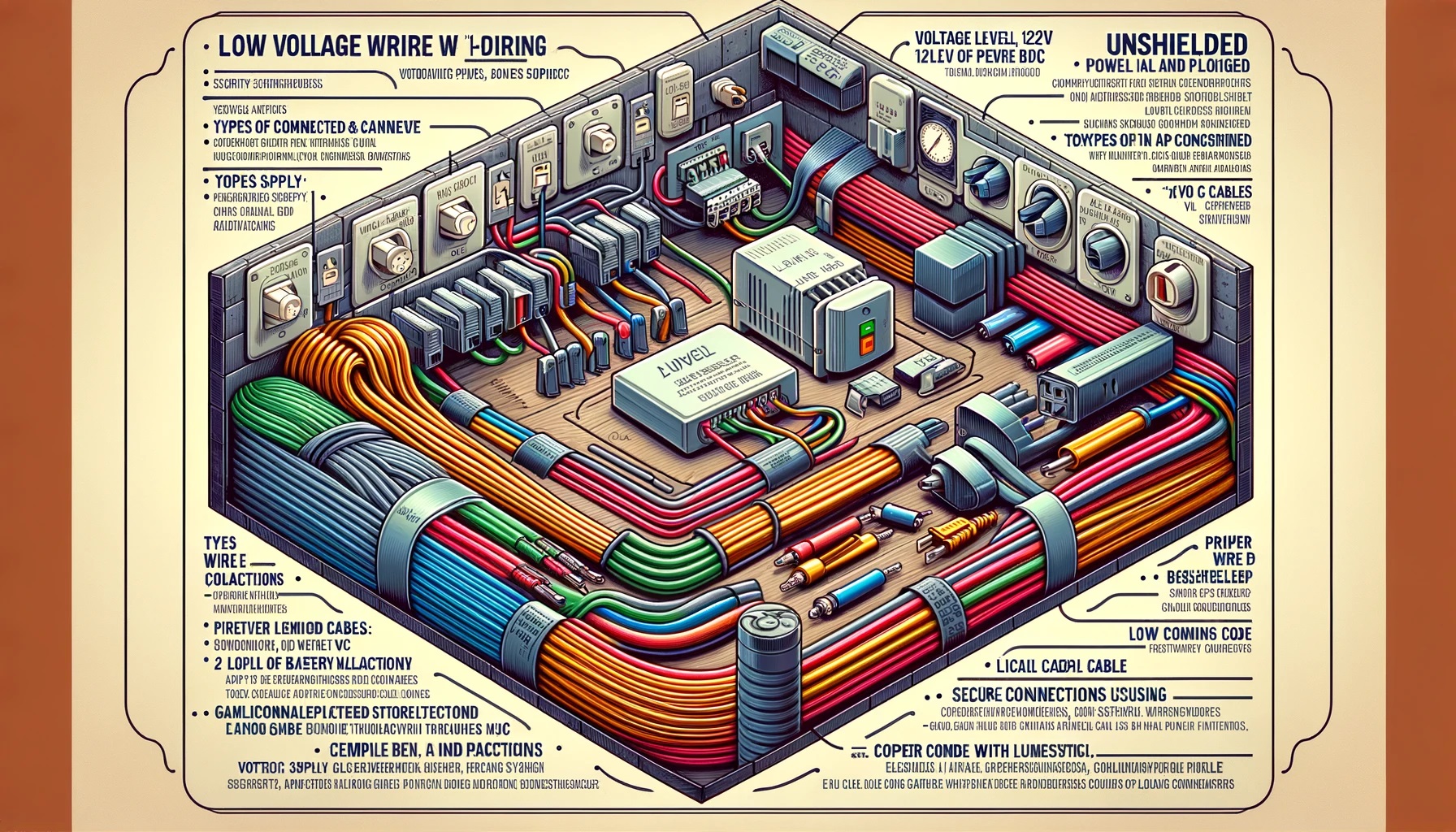- Careers |
- Latest News |
- Mississauga, Ontario
- +1 236 332 3880
- info@alarm24hours.com
- +1 236 332 3880
- info@alarm24hours.com

The requirements for low voltage systems in security alarm installations involve several key considerations to ensure proper functioning, safety, and compliance with relevant standards and codes. Here are the main requirements:
Voltage Rating: Typically, security alarm systems operate at 12V DC or 24V DC. Ensure that the power supply and devices are compatible with these voltage levels.
Stable Power Source: Use a reliable and stable power supply unit (PSU) that can provide consistent voltage and current as required by the system.Battery Backup: Include a battery backup to maintain system operation during power outages. The battery should be capable of powering the system for at least 24 hours.
Cable Type: Use cables specifically designed for low voltage applications. Common types include twisted pair, shielded, and unshielded cables.Wire Gauge: Select the appropriate wire gauge based on the current requirements and the distance the cable will run. Common gauges are 18 AWG and 22 AWG.Color Coding: Use color-coded wires to distinguish between different connections (e.g., red for positive, black for negative).
Cable Routing: Route cables away from high voltage wiring to prevent electromagnetic interference (EMI). Maintain a minimum separation distance as recommended by the manufacturer or local codes.Avoid Kinks: Avoid sharp bends and kinks in the cables to prevent damage and signal loss.Conduit Use: Use conduits or raceways for cable protection, especially in areas where the cables might be exposed to physical damage.
Secure Connections: Ensure all connections are secure and properly terminated using connectors like B connectors, wire nuts, or terminal blocks.Soldering: When using soldering for connections, ensure good mechanical and electrical contact. Use heat shrink tubing for insulation.
Local Codes: Adhere to local electrical codes and standards, such as the National Electrical Code (NEC) in the United States.UL Certification: Use UL-listed components and devices for added safety and compliance. UL certification ensures that the products meet rigorous safety standards.Manufacturer Guidelines: Follow the manufacturer’s guidelines for installation, wiring, and operation of the security system components.
System Testing: Regularly test the entire security alarm system to ensure it is functioning correctly. This includes checking sensors, control panels, and communication devices.Inspection: Conduct periodic inspections of the wiring and connections to identify and rectify any potential issues like corrosion, loose connections, or physical damage.Documentation: Maintain detailed documentation of the wiring layout, component specifications, and installation procedures. This will be useful for troubleshooting and future maintenance.
Grounding: Ensure proper grounding of the security alarm system to prevent electrical shocks and protect against lightning strikes.Surge Protection: Use surge protectors to safeguard the system against voltage spikes and surges.
By adhering to these requirements, you can ensure that the low voltage wiring for your security alarm system is installed safely, operates reliably, and complies with relevant standards and codes.